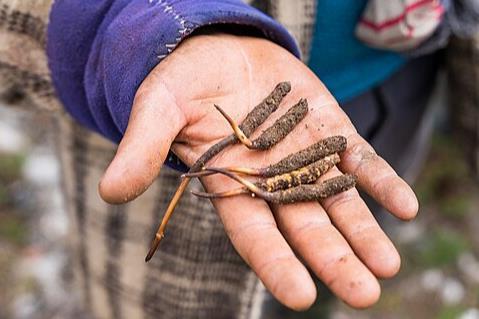A recent study from China has reported that Cordyceps sinensis (CS), a traditional Chinese medicinal fungus, can ameliorate idiopathic pulmonary fibrosis (IPF) in mice by inhibiting mitochondrion-mediated oxidative stress.

The research, conducted by a team led by Huan Tang and Jigang Wang from the Institute of Chinese Materia Medica at the China Academy of Chinese Medical Sciences, was published in Wiley’s MedComm-Future Medicine.
READ MORE: Study explains how a fungus can control an extremely harmful pest
READ MORE: New species of insect-parasitising fungus discovered in lower Himalayas
Idiopathic pulmonary fibrosis is a chronic and progressive lung disease characterized by a decline in lung function, ultimately leading to respiratory failure and a significantly reduced quality of life for patients. With a median survival duration of 2 to 5 years post-diagnosis, there is an urgent need for effective treatments beyond the current anti-fibrotic medications, which are associated with adverse effects.
Insect parasite
The study details how CS, a parasite of insects known for its antioxidant and anti-inflammatory properties, was found to mitigate pulmonary inflammation and collagen deposition in a mouse model of IPF. Proteomic analysis revealed that CS’s therapeutic effect may be attributed to the regulation of mitochondrial oxidative phosphorylation, suggesting a potential protective mechanism against IPF.
The research team’s findings indicate that CS not only reduces the production of mitochondrial reactive oxygen species (mitROS) but also mitigates oxidative stress and inflammation by targeting mitochondrial complexes I and II. These mechanisms contribute to the therapeutic effect of CS in pulmonary fibrosis, offering a promising alternative for patients suffering from this debilitating disease.
Therapeutic effects
The study concludes that CS has the potential to be a novel therapeutic agent for IPF, with its effects validated through both in vivo and in vitro experiments. However, the authors acknowledge the need for further research to identify the specific components in CS responsible for its therapeutic effects and to elucidate the detailed mechanisms of its action.







No comments yet